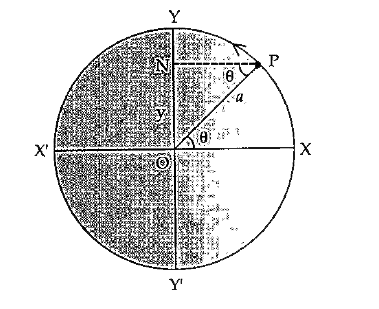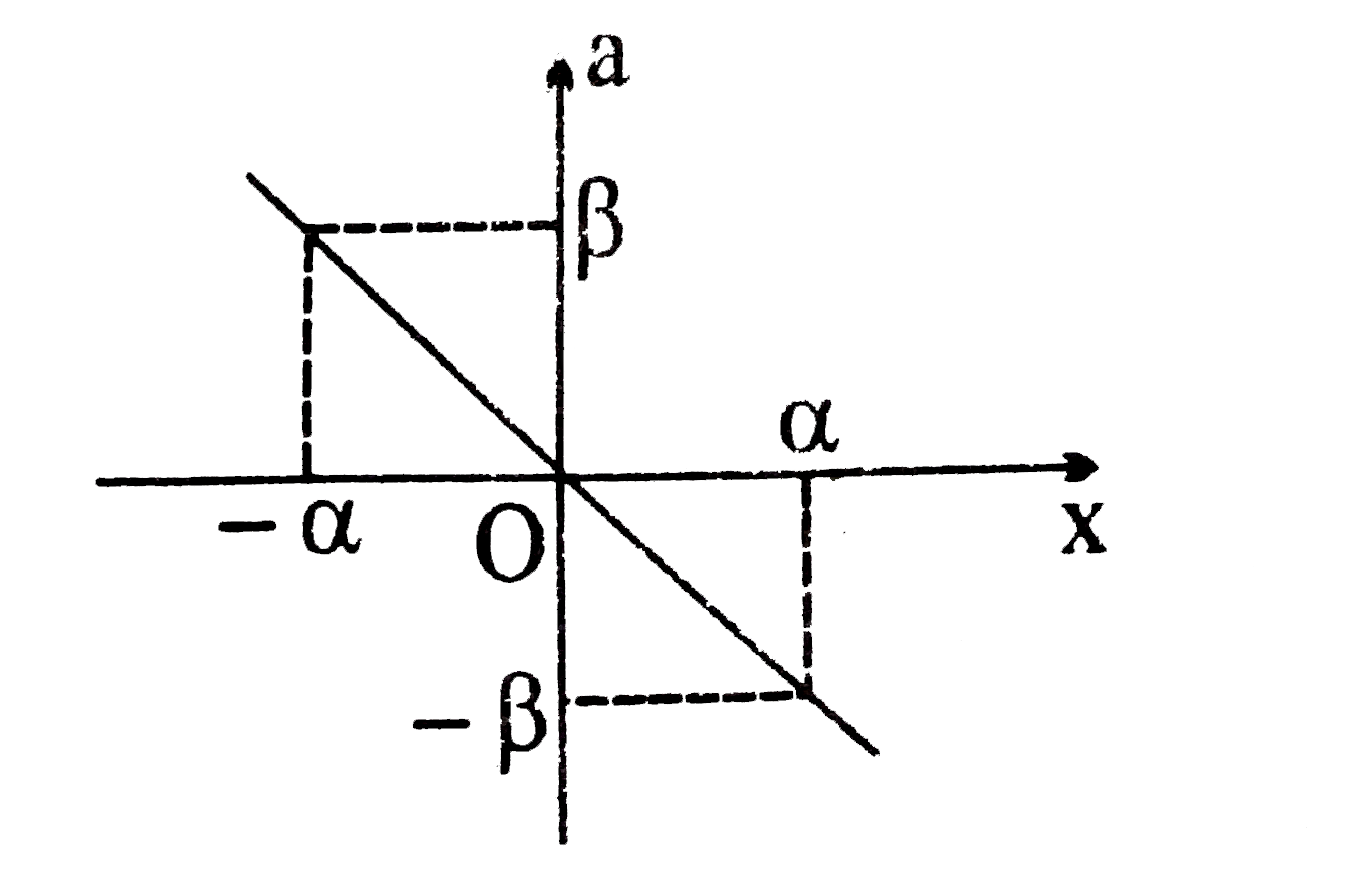Obtain the formulae for displacement, velocity, acceleration and time period of a particle executing simple harmonic motion. When is the velocity of particle maximum and when zero ? Acceleration ?
Let us consider a particle executing a uniform circular motion with uniform speed
. O is the center of the circle.
OP = a = radius of the circle.
XX. and YY are the two perpendicular axes along diameters.
The projection of the uniform circular motion on a diameter of a circle executes a simple harmonic motion.

The distance travelled by the foot of the perpendicular (N) drawn from the revolving particle (P) at any instant of time t from its mean position (O) is known as displacement. When the particle is at P, the displacement of the foot of the perpendicular (N) from O along Yaxis is y.
ON=y=OPsinθ
Or,y=asinωt(∵θ=omeatandOP=a= tan radius of the circle, it is the amplitude of the motion)
∴y=asinomηt...(i)
The rate of change of displacemtn is the velocity.
Differentiating eqn. (i) with respect time t
dydt=ddt(asinωt)
or,v=aωcosθt...(ii)
or, v = a omega (sqrt) (1 - sin ^(2) omega f)
or, v = a omega (sqrt) [1- (y ^(2) //a ^(2)) ]
omega v = a omega (sqrt) (a ^(2) - t ^(2))...(iii)
The rate of change of velocity is the acceleration.
d2ydt2=ddt(acosωt)
or,α=−ω2asinωt.....(iv)
∴α=−ω2y...(v)
(-ve sign indicates that the acceleration is the opposite direction of the displacement)
Formula of time period:
The period of the projection =T=2π/ω=...(vi)
From equation (v) considering the magnitude of acceleration (α)
α=ω2y
∴ω2=α/y
Putting in equation (vi)
T = pi (sqrt) (y //alpha ) ....(vii)
Maximum velocity and zero velocity : The velocity is , when y = a i.e. when the projection passes through the end points of the motion where displacement is maximum. The velocity is maximum, when the projection passes through the mean position (y = 0) of the motion,
Maximum acceleration and zero acceleration : The acceleration is 0, when y = 0, i.e. the projection passes through the mean position. It is maximum, when the particle passes through the end points of the motion. The acceleration is maximum when the projection passes through the end points of the motion.
Topper's Solved these Questions
- SAMPLE QUESTION PAPER-2 BOOK - ICSECHAPTER - SAMPLE QUESTION PAPER-2 EXERCISE - SECTION-D
10 Videos
- SAMPLE QUESTION PAPER-2 BOOK - ICSECHAPTER - SAMPLE QUESTION PAPER-2 EXERCISE - SECTION-B
13 Videos
- SAMPLE QUESTION PAPER 5BOOK - ICSECHAPTER - SAMPLE QUESTION PAPER 5EXERCISE - SECTION - D (Answer all questions.)
6 Videos
- SAMPLE QUESTION PAPER-3 BOOK - ICSECHAPTER - SAMPLE QUESTION PAPER-3 EXERCISE - SECTION-D
6 Videos
Similar Questions
Knowledge Check
Which of the following relationships between the acceleration a and the displacement x of a particle executing simple harmonic motion?
Aa=2x2Ba=−2x2Ca=2xDa=−2x
For a particle executing simple harmonic motion, the acceleration is proportional to
View SolutionThe shape of graph plotted between velocity and position of a particle executing simple harmonic motion is
View SolutionThe displacement of a particle in simple harmonic motion in one time period is
View SolutionThe phase difference between the instantaneous Velocity and acceleration of a particle executing simple harmonic motion is
View SolutionThe distance moved by a particle in simple harmonic motion in one time period is
View SolutionWrite the expressions for velocity and acceleration of a particle executing simple harınonic motion in terms of its displacement.
View SolutionThe acceleration-displacement (a−X) graph of a particle executing simple harmonic motion is shown in the figure. Find the frequency of oscillation.

View Solution
